Once we had driven past all the lorries queuing to get into Turkey, our border crossing was relatively easy.
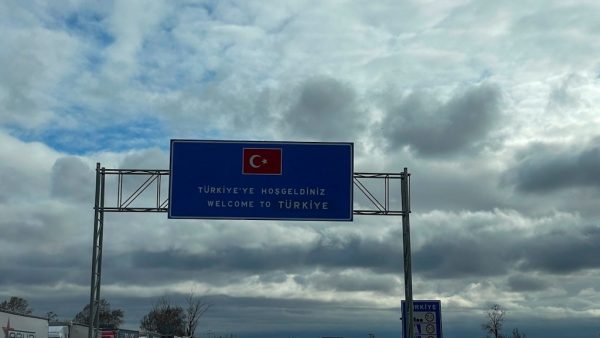
We had to stop to buy van insurance at the border – EUR140 for three months, and the office is easy to find. One tip is don’t use the cash machine here as the bank loads a huge handling fee on to the withdrawal!
Once away from the border find a Ziraat Bankasi ATM as they don’t charge at all. Back at customs we were only asked if we were carrying electrical goods. Our cameras, iPads, phones etc were not an issue and we were waved through. The Turkish border makes quite an impression!
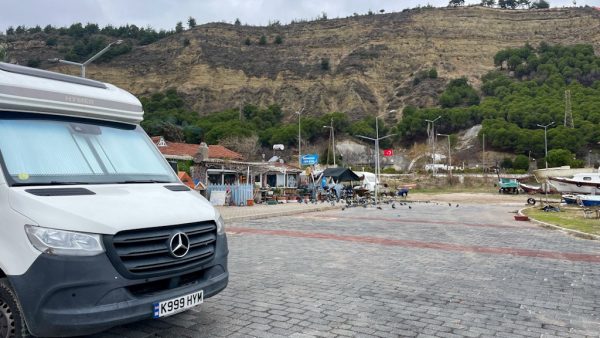
We had a vague route in mind for this first part of Turkey having watched several other travellers on YouTube and a couple of weeks to explore before spending Christmas in Fethiye with our children who were flying out to join us in a house we have rented for the week.
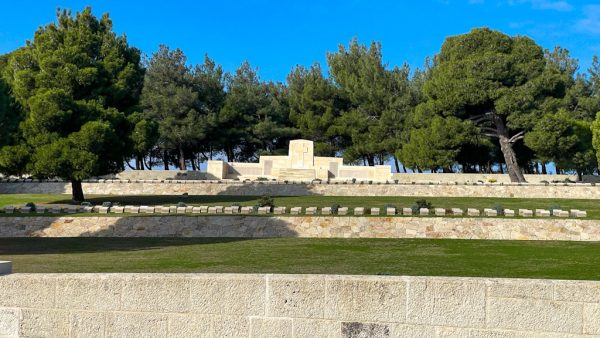
Our first stop was the Gallipoli (Gelibolu in Turkish) peninsula, the site of several battles in 1915. It’s a site of particular importance to Australians and New Zealanders as well as Turks and the southern end of the peninsula is home to 40 Allied and at least 20 Turkish war cemeteries. The Allied cemeteries are maintained by the Commonwealth War Graves Commission and their website (www.cwgc.org) can be checked if you are trying to locate a particular grave. The area is now pine covered rolling hills and is well sign posted for the individual cemeteries and memorials. A very thought provoking trip.
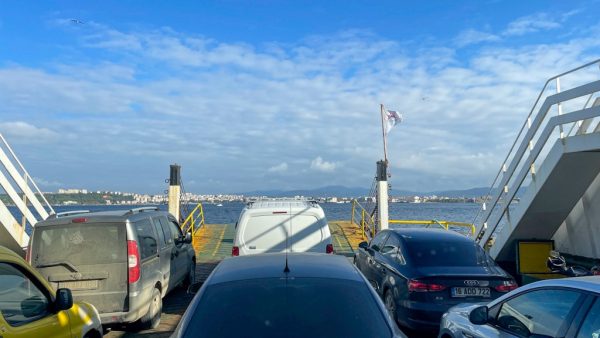
We left the peninsula and crossed the Dardanelles Straits to Canakkale via a small ferry. This also took us to a new continent as we left Europe and arrived in Asia.
As well as changing continents we moved from recent history to ancient and a region, to quote our Lonely Planet guidebook, with an “embarrassment of ruins”!
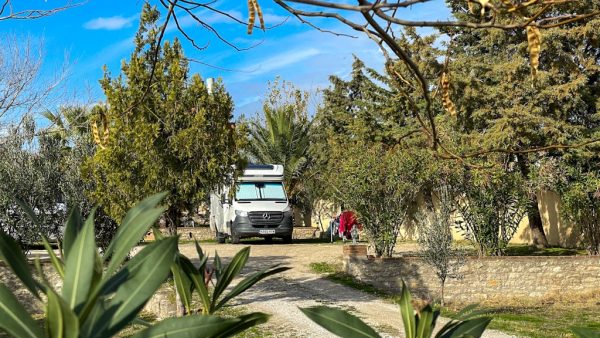
We didn’t stop in Canakkale and instead drove to the town of Troy (Troia), a short distance to the south. We parked at the Troia Pension and were able to walk to the museum and the ruins from there. If not using a guide (we didn’t) then buy a joint ticket (tl150 each) and visit the museum before the ruins to get some sense of the history. Compared to other sites the ruins here are exactly that but there are a couple of spots where they have excavated enough that you can see multiple layers of Troy’s history.
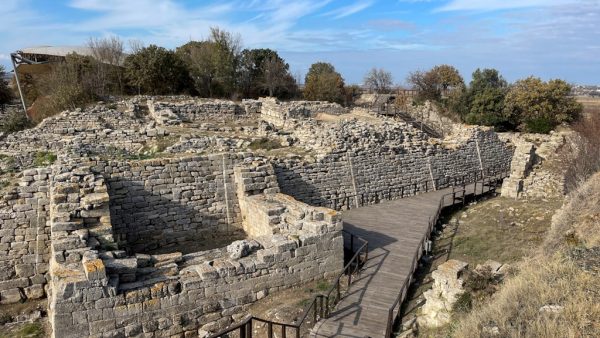
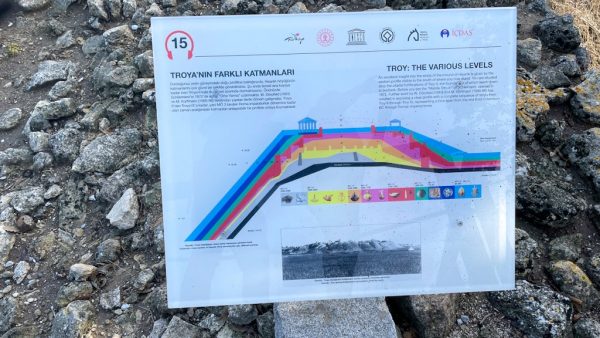
The Pension offered food albeit not from a menu so we ate there one night. Meatballs, rice and salad which although basic was tasty. Watch out for the wine though – it was good but expensive at over £4 a glass!
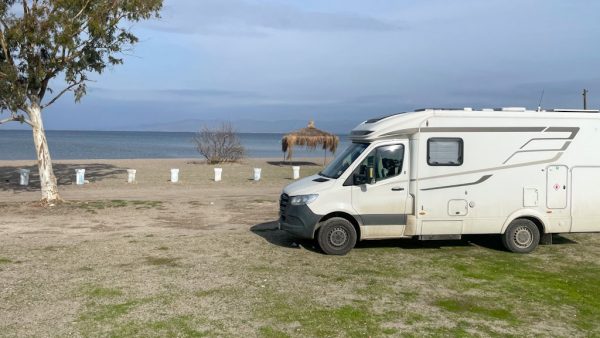
We had a couple of days at the beach before heading to Bergama and the ruins of the ancient city of Pergamum where we drove up the hill to the Acropolis rather than take the cable car. These ruins were UNESCO listed in 2014 and date from at least the 5th century BC. The site is scattered over the hill top and includes a steep 10,000 seat theatre. Well worth the tl100 entry fee (tl50 for an audio guide).
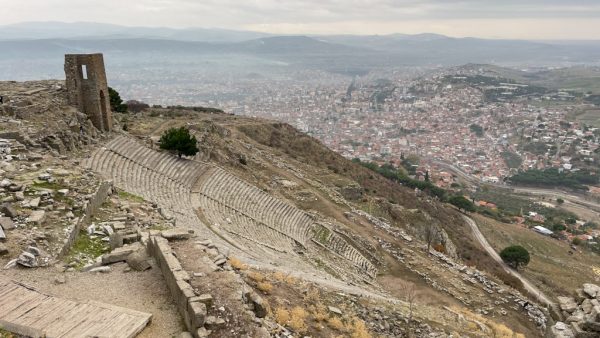
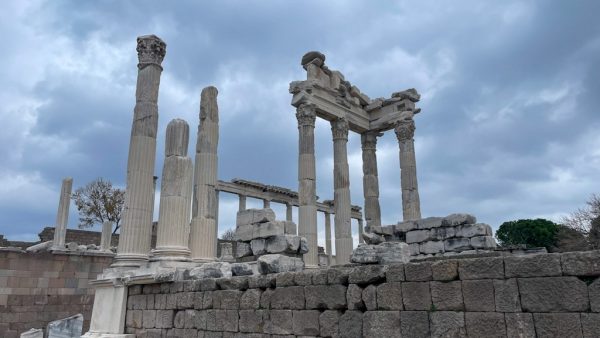
Next was the site at Ephesus, once the 4th largest city of the Roman Empire with over 250,000 inhabitants and was previously located by the sea although over time the harbour silted up and the water is now some distance away. This site is huge and yet they think about only 20% has been excavated. The theatre here seated an impressive 25,000 people although the three Singaporean lads singing a Christmas carol from the stage were playing to no more than 50 people (but I imagine many more on Tik Tok or Instagram!).
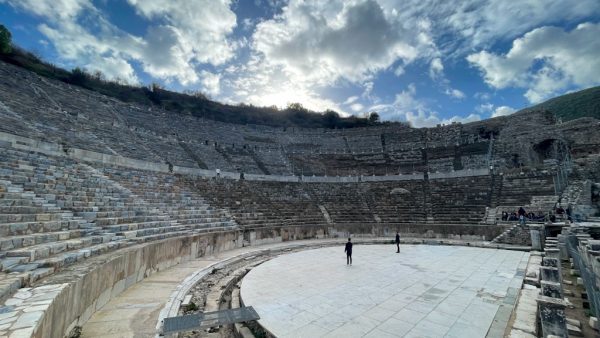
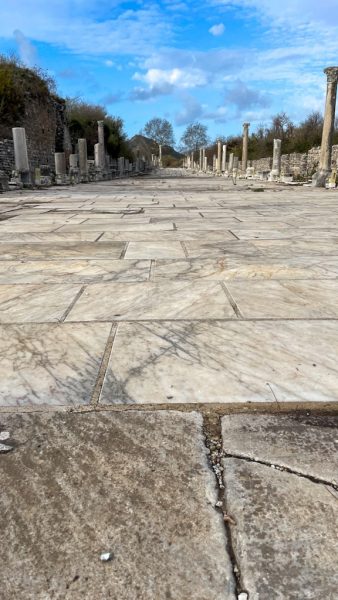
We bought the ticket which covered the main site and the terrace houses (tl250 per person). The latter is a live excavation site which is within the main Ephesus city but fenced off and under cover and the buildings are very well preserved.
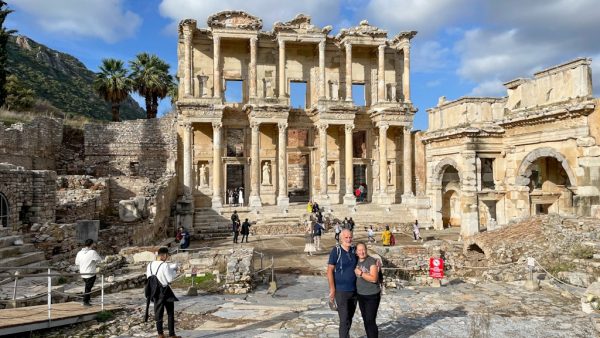
Ephesus is Turkey’s most visited ruins and in the summer we can imagine that it is overrun with tour buses so probably best to visit as soon as it opens. One of the positives for travelling out of season is visiting these sites when they are relatively empty.
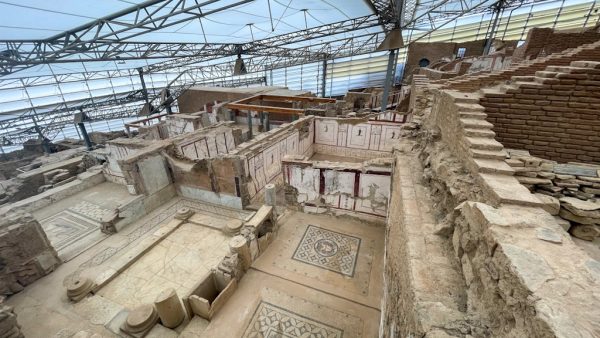
Our whistle stop tour continued on to Pamukkale where you can visit the travertine terraces and the ancient spa city of Hierapolis (same ticket – tl200 per person). The white water filled pools of the terraces can be reached by several gates but we used the north one which is located at the top. You can park and walk up from the bottom or from the town but as shoes are not allowed on the terraces themselves it would be quite tough on the feet! We would also suggest following the path away from the main pools area through the ruined fort and on to some more pools there. You can’t access these pools but the area is quieter making photos easier.
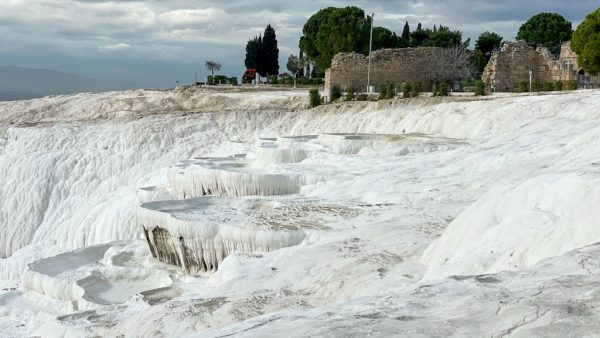
One extra you can do once on the site is swim amongst the ruins in Cleopatra’s Pool, a small geothermal heated pool close to the restaurant and coffee bar. It costs an extra tl130 and the ticket has a 2 hour time limit (probably summer only as nobody was checking during our visit).
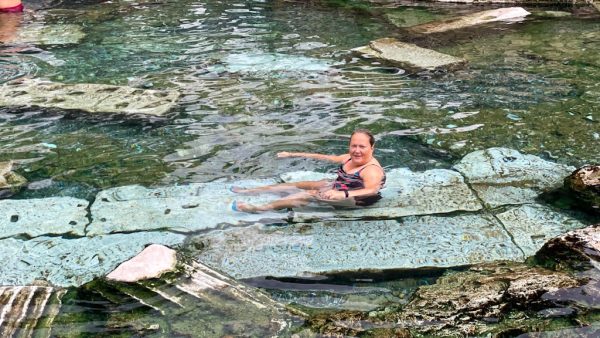
The city was a destroyed by a series of earthquakes and the fault line is marked by a couple of signs. We had a wander through some of the ruins and climbed the hill which took us to the top of the Roman theatre which was worth the effort.
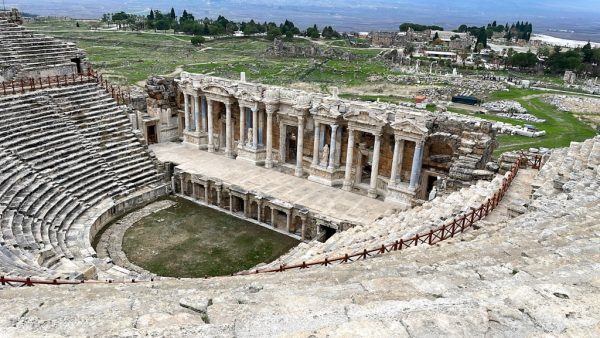
As well as seeing the area on foot, several companies offer sunrise balloon flights over the terraces but we think the weather had grounded them the morning we were there.
After all the tearing around over the past two weeks and before the children coming out to visit, we decided we needed a few days to relax and catch up with ourselves. We spent a couple of days parked up next to Lake Salda, a beautiful lake but cold at an altitude of over 3,700feet.
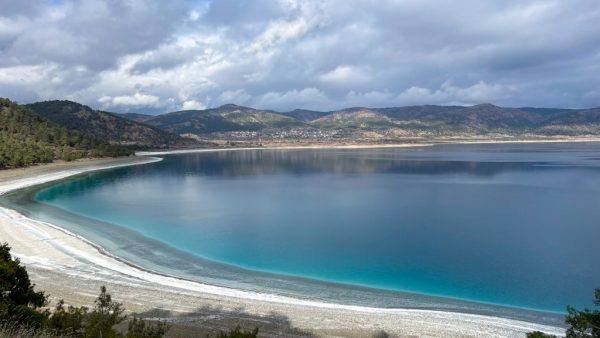
From here, after a visit to Carrefour, we headed out to the coast near Marmaris to a campsite on a cove surrounded by wooded hills.
Campsites used:
Troia Pension, Troy: tl300 p/n (approx £13.50) including EHU. Small parking area next to the restaurant with toilets, a shower and access to a washing machine.Site is across the road from the Troy Museum and a short walk to the ancient ruins of Troy.
Antique Lodge Campsite, near Kusadasi: tl330 p/n (£14.60). EHU available based on usage – tl6 per unit. Great campsite with all you need including a swimming pool and lots of communal space around the bar/restaurant area.
Catlak Beach & Camping: tl300 p/n including EHU. Small beachside campsite accessed via the small beach road. Bar and restaurant on site. Great place to sit and chill for a few nights.
Other overnight stops:
Boomerang Bar, Eceabat: Free but buy a drink at the bar. Small hard standing, seaside parking area on the edge of the town. Good site from which to explore Gallipoli.
Bademli Beach near Dikili: Free beach side parking – grass and mud and flooded in places. Toilets and restaurants nearby (closed when we visited).
Aliaga: free beach side carpark located between a police and an army base. Lots of locals coming and going (we were there on a Saturday night), a few stray cats and rubbish lying around (lots of bins though). Toilets but they were locked. Fine for an overnight stay.
Atca: Free overnight park up in the Aqualand car park just off the main road. Quiet as the park is closed and fine for an overnight stay.
Pamukkale: Free park up just outside the town on the balloon take off/landing site (sadly no balloon flights during our night there).
Salda Lake: Free parking on the west side of the lake close to a restaurant (currently closed but toilets open). Flat grass parking away from the water’s edge although the ground was a little soft (very soft close to the water). Several local dogs who stayed with us the whole time we were there – very friendly and harmless and just wanted food, although they were fed by a local each day.
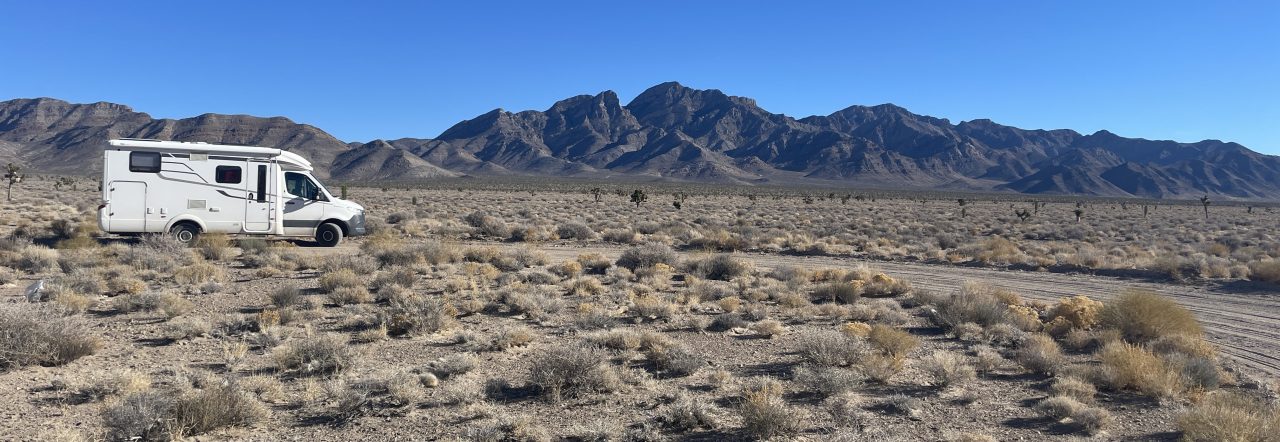
Thanks for the information. Great introduction to Turkey
There for a few months later in the year
Thanks.
Türkiye is beautiful. We loved it there.
Have a fantastic time.